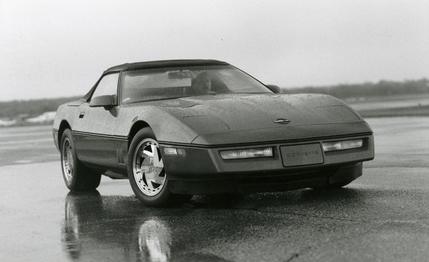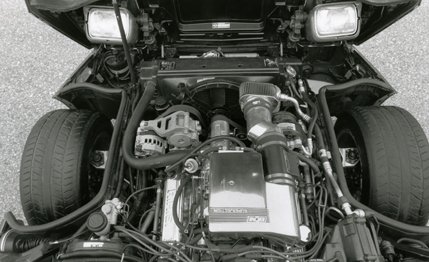
 Archived Road Test
Archived Road Test
Mike Burroughs lives his life as if he had found the secret to it all inside a fortune cookie. "Combine business with pleasure and the world will be your oyster" seems to be his credo: he's made an art of fusing his hobby and his professional life into one synergistic whole. Burroughs, an unaffected but excitable Tennessean, would no doubt sum up his philosophy in a simpler way, though. He'd say something like "Hey, I'm just havin' a ball!"
You'd have a ball, too, if you could mastermind something like the B&M SuperVette on company time. Mike Burroughs is an advertising executive who also has a jones for red-hot cars. He owns Burroughs & Associates, a Nashville ad agency that specializes in servicing—what else?—automotive-aftermarket manufacturers, and he's found that cars and advertising mix like gasoline and nitromethane. That's how the B&M SuperVette came into being. To Burroughs the ad exec, the SuperVette is a promotional vehicle. "I'll be frank about this," he says in a voice that whines like a band saw. "One of the reasons I built this car was to give some of my clients' products exposure." But Burroughs the hot rodder had other motives. "We also wanted to build a Callaway Corvette beater at a much lower price," he confesses.
Talk like that we hear every day—but coming from Burroughs, it carries extra weight. He gained the full measure of credibility with us professional skeptics two months back: in our "Gathering of Eagles" speedfest, his street-drivable 8.9-liter Camaro burned through our timing lights at 216 mph.


Burroughs's goal for the B&M Vette wasn't top speed but rocket-sled acceleration. He also wanted "a practical car a guy could drive every day." In his opinion, his friends at B&M Automotive Products, of Chatsworth, California, had the makings right on the shelf: a complete supercharger system and electronic fuel injection to go with it.
A supercharger is similar to a turbo-charger in that it force-feeds an engine its air-fuel mixture, increasing its power output. The main difference between the two kinds of pumps is that a supercharger is driven directly off an engine's crankshaft pulley, while a turbo is powered by exhaust heat and flow. This difference has performance implications. When you snap a turbo engine's throttle open, it takes a second or two for the turbocharger to spin up to full boost; the interval is known as boost lag. A supercharger, on the other hand, is turning all the time, so it suffers no lag—even when you tromp the throttle at idle. The downside is that driving a supercharger saps some horsepower, even when you're just cruising down the highway. The resulting fuel-economy penalty has kept carmakers away from superchargers until recently. Computer-controlled declutching is the answer, and that's just what the supercharged Toyota MR2 uses. Next year, Ford will introduce a supercharged 3.8-liter V-6 in its all-new Thunderbird.
The drivetrain in the SuperVette, which began life as a 1986 Corvette convertible, was pumped up by combining four B&M kits. First, an aggressive Street Charger cam was slipped into the 5.7-liter Corvette block. Next, the supercharger was bolted in where the Vette's fuel-injection system used to live. The blower, which is sized to deliver a modest 5.4 psi of boost pressure, comes with all the necessary hardware and looks like a high-quality piece. B&M's Superjection electronic throttle-body fuel-injection system went on next; the kit includes an adjustable control computer, a mass-airflow sensor, and four Bosch injectors. (The Vette's fuel-economy meter is rendered useless once the stock injection system is removed, but there are no other lasting electronic side effects.) Finally, a B&M TransKit was installed in the Vette's four-speed automatic to help it handle the increased power.